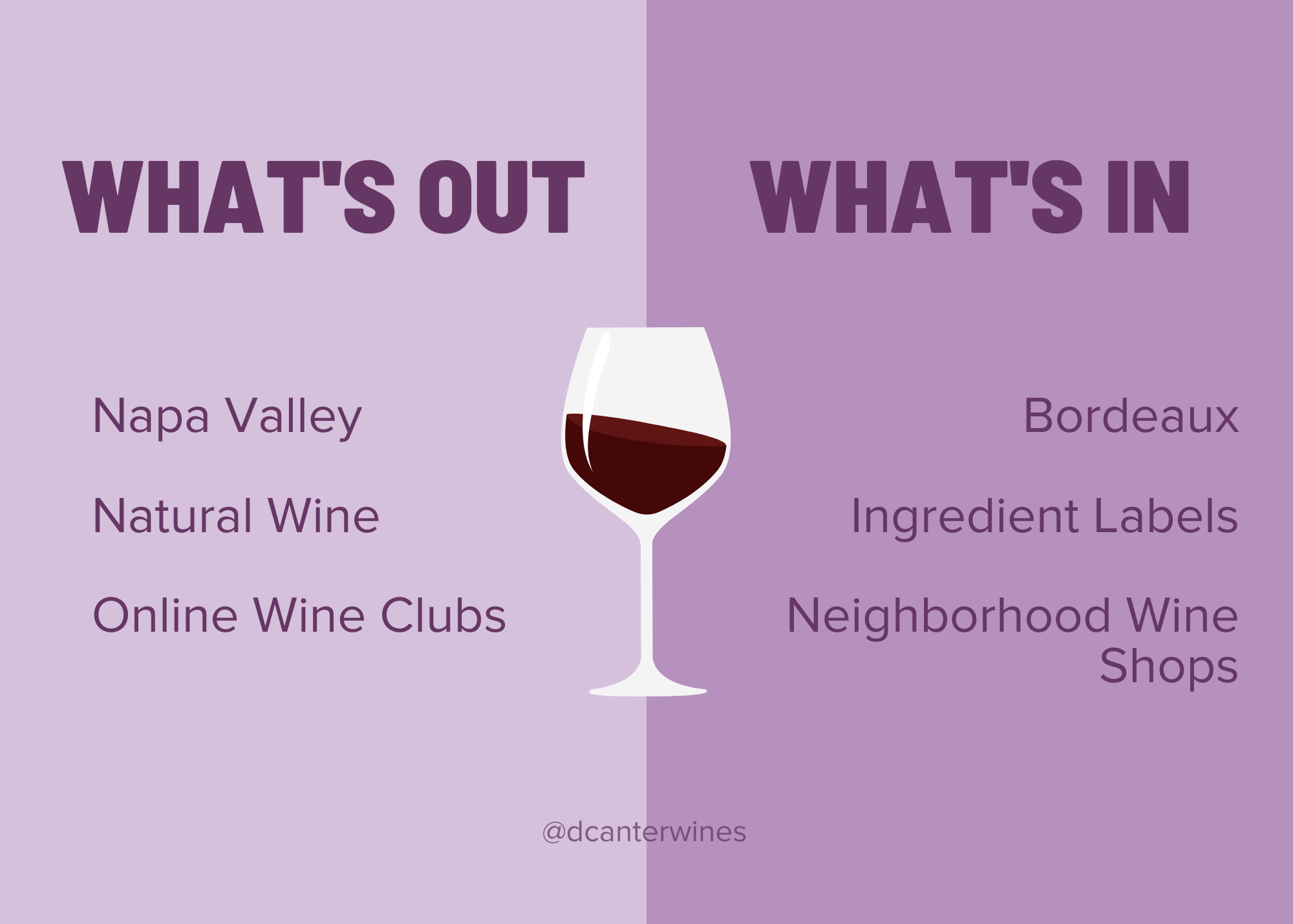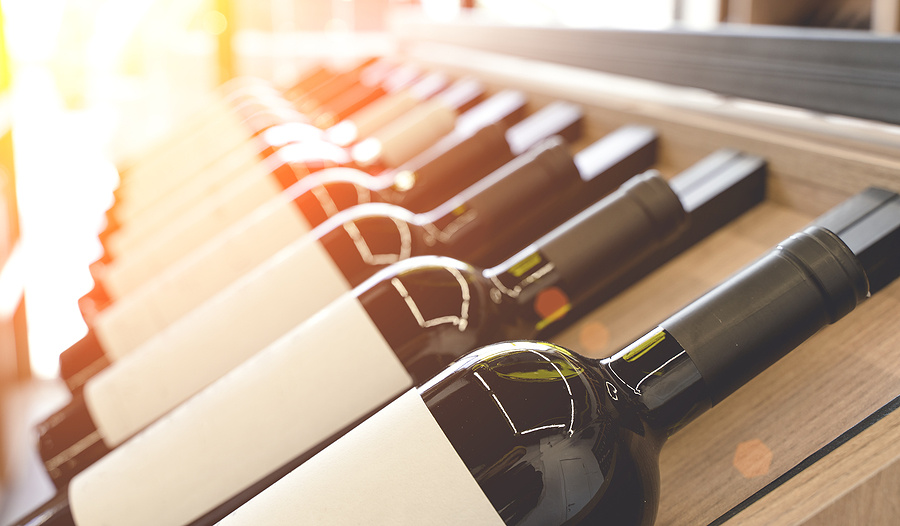As the year ends, it's time for our annual ritual of contemplating what we enjoyed—or didn't enjoy—over the past year, and what we can look forward to in the year to come. Read on for DCanter's predictions of what to expect in the world of wine in 2023.
2023 Wine Trends
by Michael Warner
Coming out of several years of professional, social, and emotional whiplash, many of us will be seeking calm, consistent, and dependable pleasures in the new year. We want to get away from fake news, algorithms, and influencers, and we want to replace them with dependability, personalization, and memories. And while that’s true in nearly every aspect of our lives, we’re here to focus on how that plays out in the world of wine and what to expect in 2023.

Napa Valley is Out, Bordeaux is In
2023 will be a year of reckoning for Napa Valley. Tech layoffs in the Bay Area will deprive the region of many of its big spending clients. At the same time, Napa Valley will become less of a destination for many out-of-town wine lovers as the entry level price of many wine tastings trends north of $50. These converging factors come at the same time many wineries are struggling to sell all of their premier wines and are rebottling much of their juice as private labels disassociated from the winery’s brand. It will be a tough set of circumstances for Napa Valley, and it will force an adjustment that will extend beyond 2023.
Bordeaux, by comparison, will solidify its place as an unexpected value leader. The EU is providing incentives for many underperforming growers to shrink their vineyards, which should result in higher overall quality for the region. The remaining growers will continue improving on what they do well as climate change provides Bordeaux with slightly warmer temperatures and helps improve fruit ripeness. The improved growing conditions combined with abundant production will encourage wine lovers to rediscover a region that has been overlooked the past few years but continues to build on its long history or wine traditions.

Natural Wine is Out, Ingredient Labels Are In
Perhaps this heading is a little bit of clickbait. More accurately, it should say “self-declared natural wine” is out. As natural wine became more popular over the past few years, many mainstream wine marketers co-opted the term. As a result, we have major wine labels that have changed nothing but now sell themselves as fit, sugar-free, low alcohol, or clean. The fact that none of these terms have any legal definitions only served to confuse the general public. It made many assume that if one wine was fit then all others must not be, no matter how misguided that assumption might have been.
Many natural wine producers have long resisted government oversight or adherence to the regulations of their respective wine appellations, often for valid reasons. While that resistance has helped natural wine producers distinguish themselves from their more conventional peers, it has also made them susceptible to less ideological winemakers. Ironically, natural wine producers now need to find a way to confirm that they really are what they say they are.
Enter ingredient labels. While they might be something of a compliance burden, they offer the benefit of confirming when a wine is made naturally with only the use of organically grown grapes, native yeasts, and—just maybe—a minimal amount of sulfites at the time of bottling. Large scale producers would, by necessity, need to show many more ingredients and additives since the realities of large scale production require more winemaker intervention.
Don’t expect the federal government to mandate ingredient labels anytime soon as there’s still far too much industry resistance at this point. Instead, expect natural wine producers to start voluntarily adding ingredient labels to their own bottles. Doing so will help distinguish those producers that are actually walking the natural wine walk and, by implication, force confused consumers to wonder just why their so-called “clean” wine doesn’t want to disclose what’s actually in the bottle.

Online Wine Clubs Are Out, Neighborhood Wine Shops Are In
It finally happened. Winc has declared bankruptcy after churning through tens of millions of venture capital dollars. It turns out that, despite clever marketing and cheap prices, online wine clubs often don’t provide the value that they promise. The model is almost always the same – buy large lots of unsold wine at discounted prices and pass on the savings to the customer. The quality of the wine isn’t a consideration on the spreadsheet. The purchase decision is more about how quickly the wines can be relabeled for their respective wine clubs. And when I say that the model is the same, I really mean it. After all, both the Wall Street Journal and NPR wine clubs (amongst others) are administered by an obscure California company called Lionstone West.
The lack of personalization in the online wine clubs contrasts greatly with the personal relationships built at local wine shops. In a world of algorithms designed to guess your red wine preference, it’s the friendly face at the counter who knows you actually prefer sparkling. And coming out of an extended period of forced online shopping and Zoom meetings, having a face-to-face conversation about something as enjoyable as wine is part of the fun. We all like having a place where everyone knows your name and not just your shipping address.
